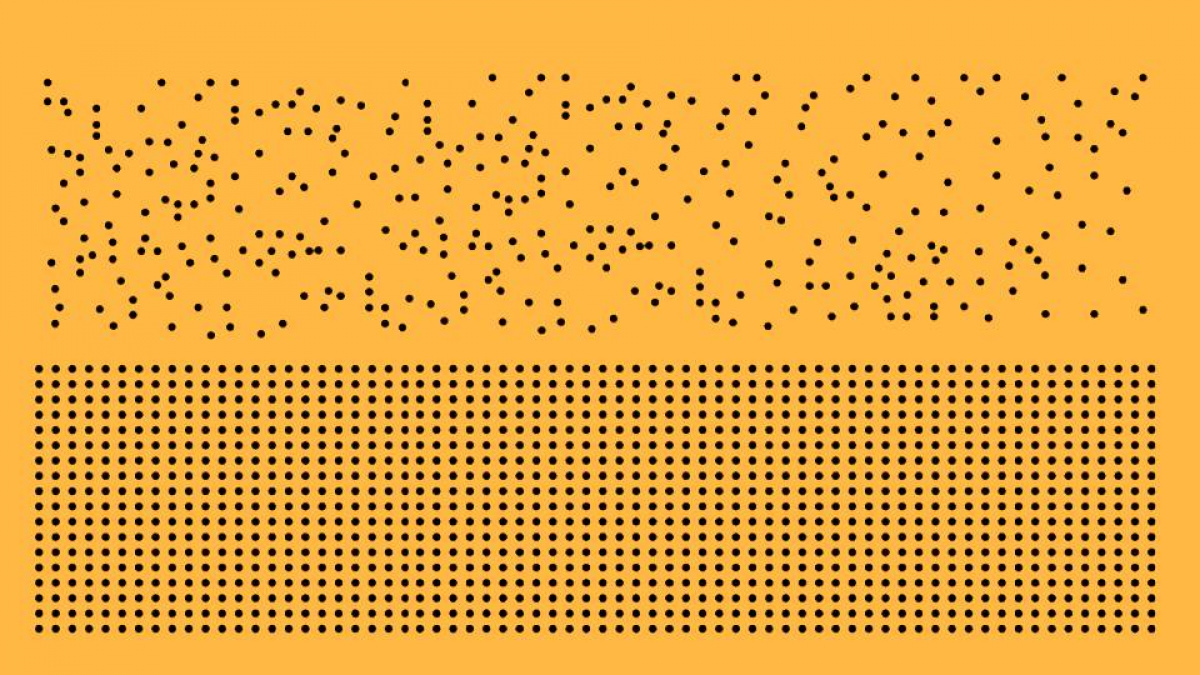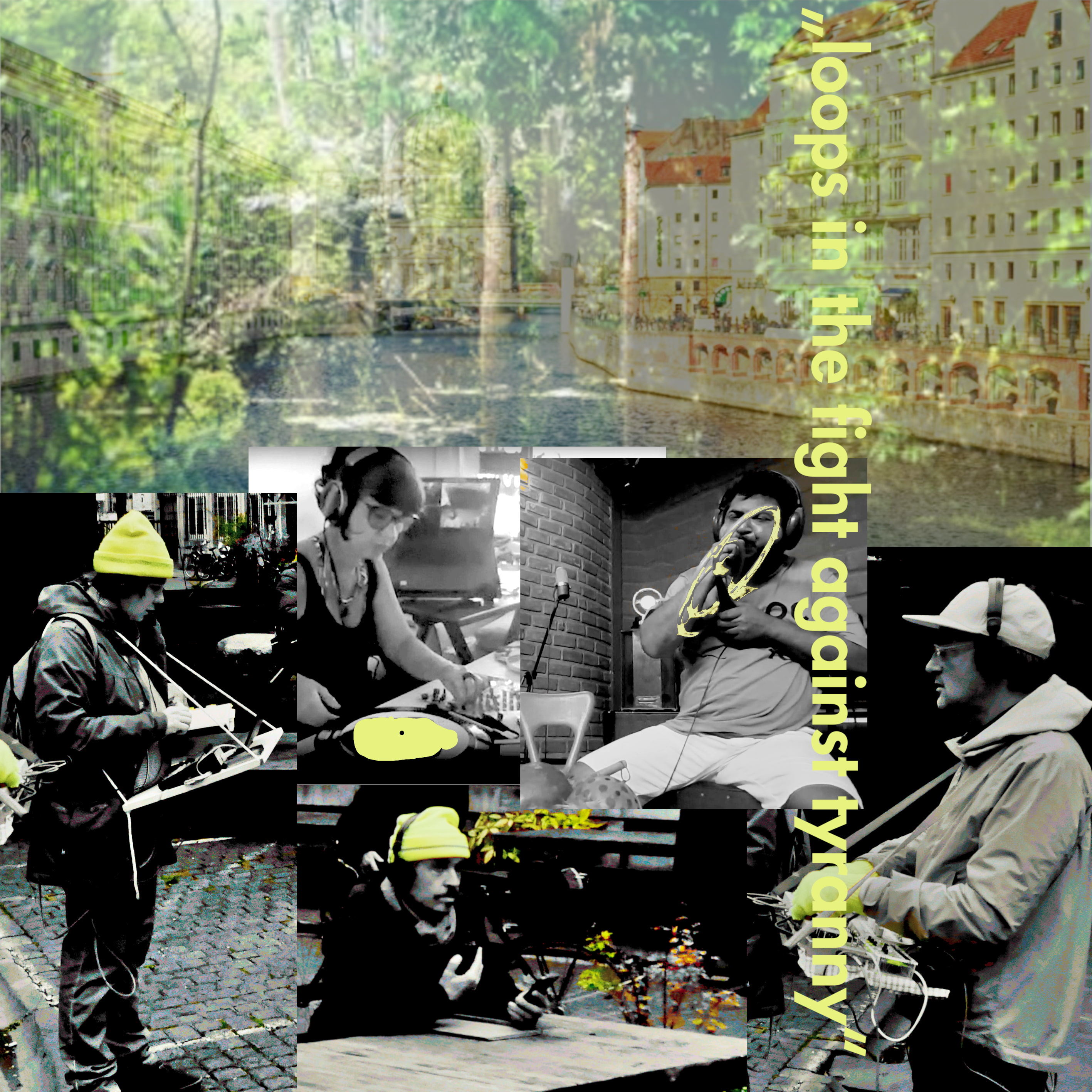
The Agency of Sonic Thinking
Sound is able to merge supposed contradictions: in the audio walk Zero, Land der Zukunft at Dystopie Festival, our writer finds herself entangled both in dystopian and utopian worlds. Here is a short essay on listening as a mode of creating critical agencies.
The audio walk Zero, Land der Zukunft by Macchina Som Allstars1, transmitted through a small receiver with headphones, is «a composition of a staged situation in the urban space and live music, placed theatrically in what can be discovered in loco» (sounding situations 2020). A live feedback loop which connects different localities (Berlin and Salvador da Bahia), technologies (radio/sequencers/microphones), voices (human and non-human), and noises (of various grains and shapes) generates an urgency and tension that upsets my listening positionality.
A pull toward a dystopian sonic and visual perception is created in this live audio walk, which leads me along the river Spree in Berlin, making me restless. Distorted radio frequencies merge with acoustic percussion and two narrative voices all of which incite my mind to delve into fictional worlds. Sounds played from cut-up vinyl records and different percussive instruments swell in and out of the mix, both soothing and eerie, blurring my clear sight on the surroundings.
Getting Lost
Nothing simply falls into place while listening to the multiple voices and noises. The audio walk increasingly disconnects me from the familiar noisescape of Berlin and I get lost with a dissociated musical body that winds itself around two fragmented fictional stories. While looking at the different shades of grey concrete and dirty red brick that surround me, I am distracted by a voice reading from the novel Brazil, Land of the Future by Stefan Zweig: «There was colour and movement, the excited eye never tired of looking, and wherever it looked, it was delighted. A feeling of beauty and happiness came over me, arousing the senses, stirring the nerves, widening the heart, keeping the mind busy, and as much as I saw, it was never enough».2
These utopian words press hard on my chest as I also hear an irritating colonialist sensory imaginary, a resonance of «hungry listening» – a kind of unmarked white «[settler] listening positionality» (Robinson 2020, 38) – for exoticized and territorialized sounds. All the more do I feel drawn to the «sonic agency» of the dystopian noises that distract and refract these utterances.
There are a number of instances throughout this live audio walk in which a powerful sonic-material fabric is created that reconfigures «acoustic territories» (LaBelle 2010) and creates a productive tension between utopian and dystopian sonic fictions.
Connecting Dystopias With Utopias
Another such instance is when fragmentary lists of words from the modernist novel ZERO by Loyola Brandão, which is situated in the 1960s during the Brazilian military dictatorship, meet the sonic responses by Andrea May aka may HD who sets out to «deconstruct utopian ideas by creating sound codes with the most realistic aesthetics, based on real facts, questions, social and political problems, our current dystopian world» (May 2020). Using the following tools, these aesthetic strategies «connect contemporary dystopia with a possible utopian future» (ibid.):
* loops in the fight against tyranny
* noise as a warning of corruption or dominance
* free cutouts against dictatorial rules
* technical failures such as rupture with hierarchies and outdated values (conceptual notes by May/September 2020)
This list of artistic tools reads almost like a manifesto for critical listening and sonic thinking, a quest for «listening as a mode of being-in-the-world and thinking which explores its powerful, critical, embodied and speculative agencies» (Maier 2020). And the audio walk provides a spatio-temporal node through which these modes of listening can be explored, and through which the dynamics of dystopian and utopian sonic fictions generate utopian aspirations, a futurhythmachine (Eshun 1998) that could «become a possible real world» (Macchina Som 2020).
- 1. The artists Milena Kipfmüller and Klaus Janek (aka sounding situations), with Lukas Matthaei form Macchina Som Allstars. For «Zero, Land der Zukunft», they teamed up with Salvador-based visual and sound artist Andrea May aka may HD and sound artist and improvisor Edbrass Brasil.
- 2. Translated by the author. The original German version reads: «Da war Farbe und Bewegung, das erregte Auge wurde nicht müde zu schauen, und wohin es blickte, war es beglückt. Ein Rausch von Schönheit und Glück überkam mich, der die Sinne erregte, die Nerven spannte, das Herz erweiterte, den Geist beschäftigte, und soviel ich sah, es war nie genug».
List of References
This text was created as part of the project «Travelling Sounds» and has received funding from the European Union’s Horizon 2020 research and innovation programme under the Marie Skłodowska-Curie grant agreement No 750199.
«Sonic Vignettes» is a Norient Special discussing sound: one fragment, one experience, recording, one viral video, stream, one monograph or encounter at a time – in all its depth, its historical and affective ramifications, with the finest expertise in Sound Studies. Initiated by Holger Schulze, Rolf Großmann, Carla J. Maier, and Malte Pelleter, published as a monthly column.
Biography
Published on December 14, 2020
Last updated on March 27, 2024
Topics
From afrofuturist parallel worlds to decoding strategies of emancipatory sounds: Examinations of music striving for a life worth living.
Why do people in Karachi yell rather than talk and how does the sound of Dakar or Luanda affect music production?
A generative practice that promotes different knowledge. One that listens is never at a distance but always in the middle of the sound heard.
How do acoustic environments affect human life? In which way can a city entail sounds of repression?
Special
Snap
